Genus Melogale Higher classification Ferret-badger | Phylum Chordata Scientific name Melogale moschata Rank Species | |
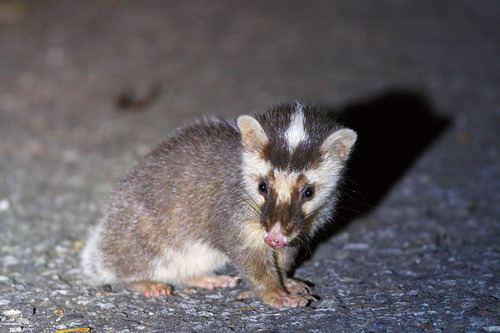 | ||
Similar Ferret‑badger, Mustelids, Burmese ferret‑badger, Hog badger, Bornean ferret‑badger | ||
Chinese ferret badger
The Chinese ferret-badger (Melogale moschata), also known as the small-toothed ferret-badger is a member of the Mustelidae, and widely distributed in Southeast Asia. It is listed as Least Concern by IUCN and considered tolerant of modified habitat.
Contents
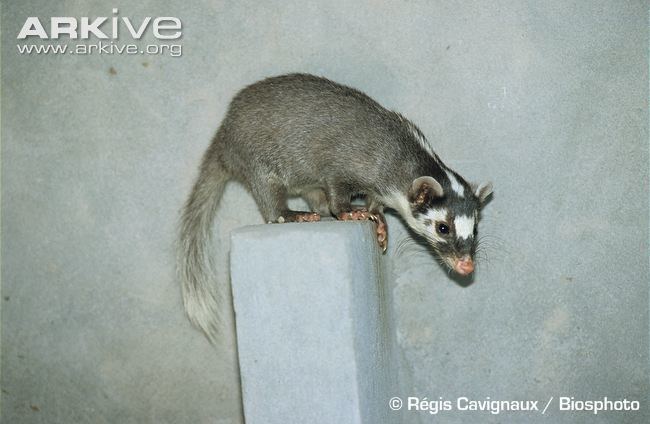
Characteristics
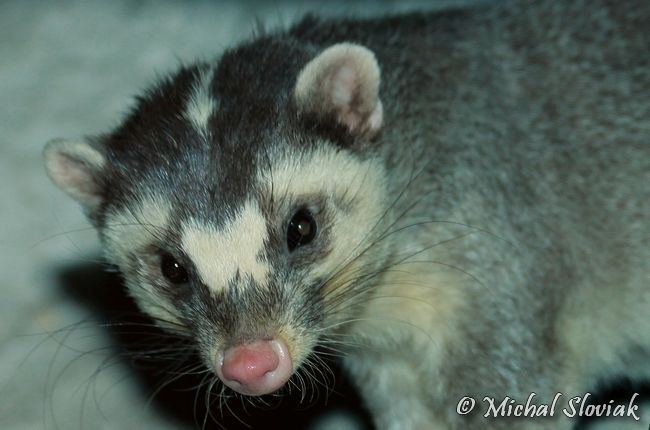
Distinctive mask-like face markings distinguish the Chinese ferret-badger from most other oriental mustelids, although the remaining members of the genus Melogale have comparable facial markings. This ferret-badger lives in burrows or crevices and is active at dusk and at night. It is a good climber and feeds on fruit, insects, small animals and worms. It is savage when alarmed and its anal secretions are foul-smelling.

The average body size of the Chinese ferret-badger is 33 to 43 centimetres (13 to 17 in) with a tail of 15 to 23 centimetres (5.9 to 9.1 in). It lives in grassland, open forest and tropical rainforest from north-eastern India to southern China, including Hong Kong, Taiwan and northern Indochina.
Ecology and Behaviour
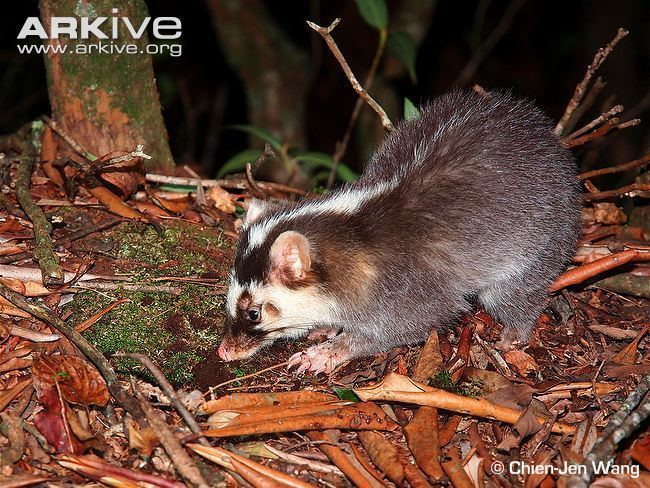
Chinese ferret-badgers mate in March. The female gives birth to a litter of up to 3 young in May or June. The new-borns are blind and well furred with the same color pattern as the adults. Their eyes open at about two weeks of age.

Earthworms, amphibians and insects are important components of the Chinese ferret-badger's diet. They also eat fleshy fruits such as of Chinese plum, oriental raisin tree, date-plum and Chinese kiwi.
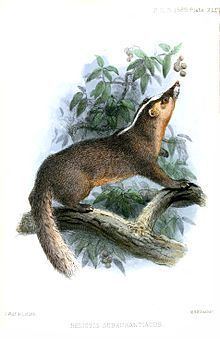
The Chinese ferret-badger is associated with reported outbreaks of human rabies in Southeastern China which were first reported in 1997 and the most recent case in 2008. There have been no reported deaths in these cases; however, there is currently no vaccination for rabies associated with ferret-badgers.
Distribution
The Chinese ferret-badger is distributed across areas of mainly Central to Southern China. Ferret badgers are among the most hunted fur-bearing animals in Southern China, but maintain relatively high population densities in part due to the near-inedibility of their meat and the low prices of their pelts.
They have small home ranges that, according to the results of a study from 1994-1996, average around 10.6 hectares in area. Despite their small home ranges, however, ferret badgers are relatively nomadic creatures, moving from one resting spot to the next without establishing permanent residence. Ferret badgers may establish single-use resting spots, or choose to inhabit a particular spot for a period of many days. They tend to rest in natural formations, including small rodent dens and rock crevices. They may also construct makeshift shelters in shallow depressions in the grounds of rice paddy, soybean, cotton, or grass fields.
The home ranges of male and female ferret badgers overlap, suggesting a lack of territoriality between members of the species.
The ferret badger has acclimated to areas of human inhabitation, taking advantage of man-made sites suitable as resting spots, such as firewood stacks and rock piles, and using farmlands and vegetable gardens as feeding sites. Ferret badgers create limited conflicts with surrounding human populations, as they avoid preying on chickens and livestock, and do not tend to cause property damage.
